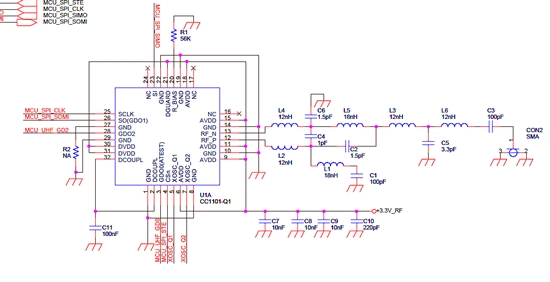Hi,
1. cc1101-q1 has a different footprint from the regular cc1101 - So does the layout of the reference design need to be modified to suit the -q1 part?
2. Also, handling 0402 components is extremely difficult. A 0805 inductor with >1GHz SRF is attached. can this be used for the matching network?
3. Similarly, please suggest 0805 type capacitors which can match with your circuit.
Thanks in advance,
Regards


